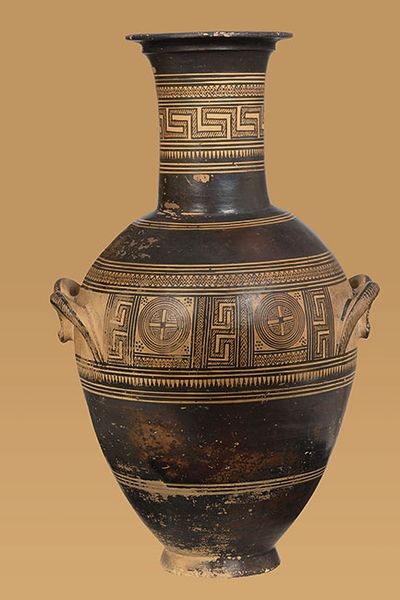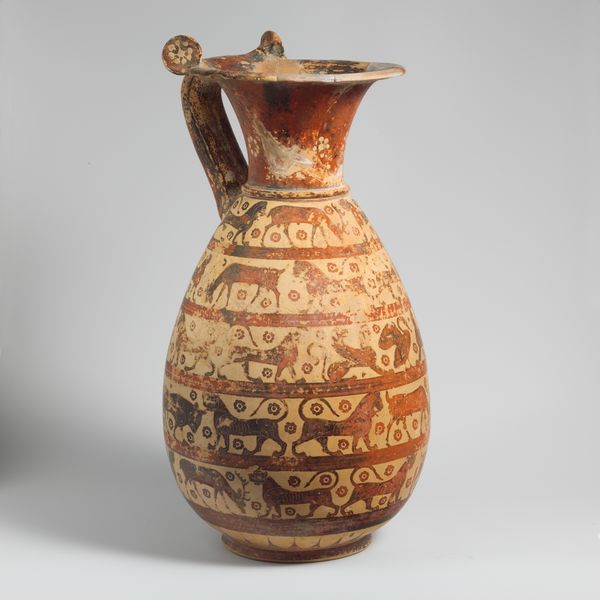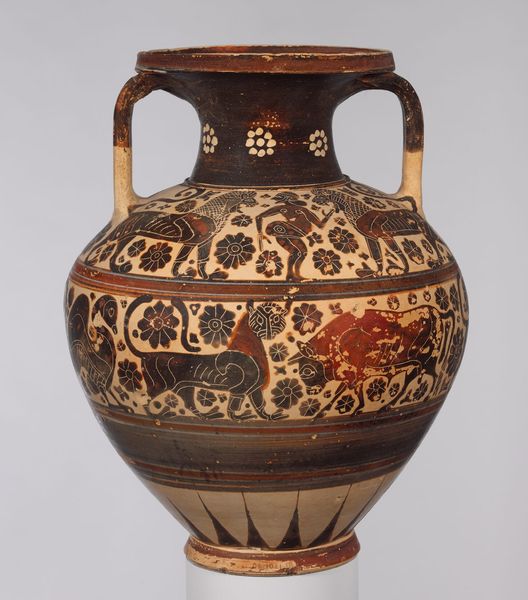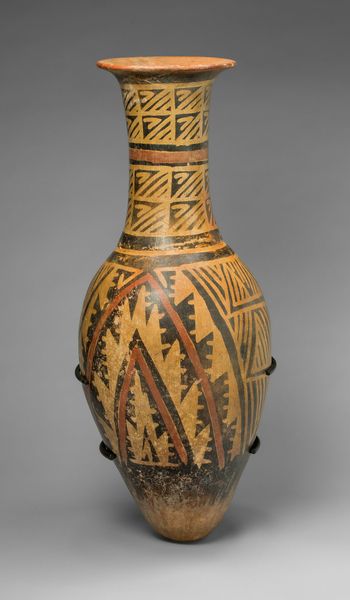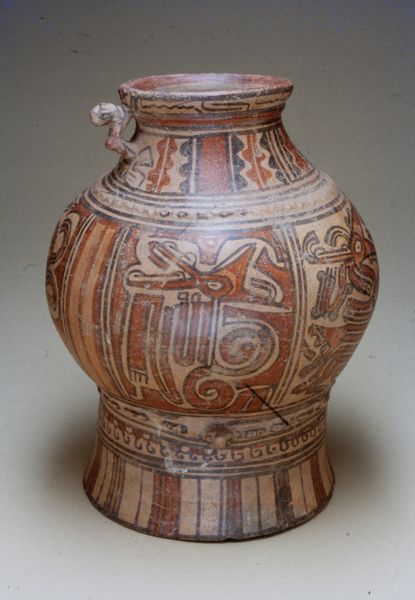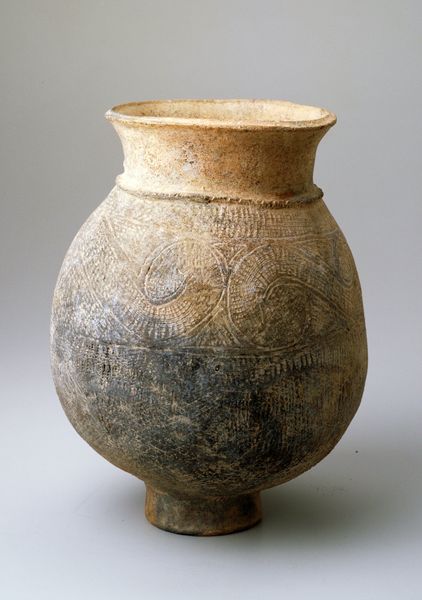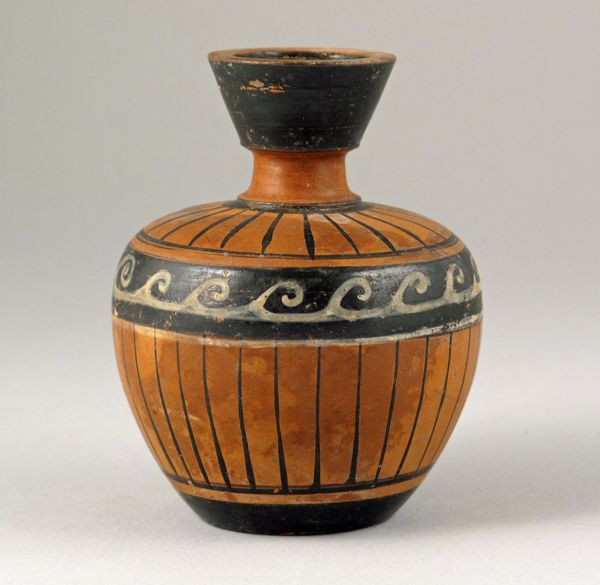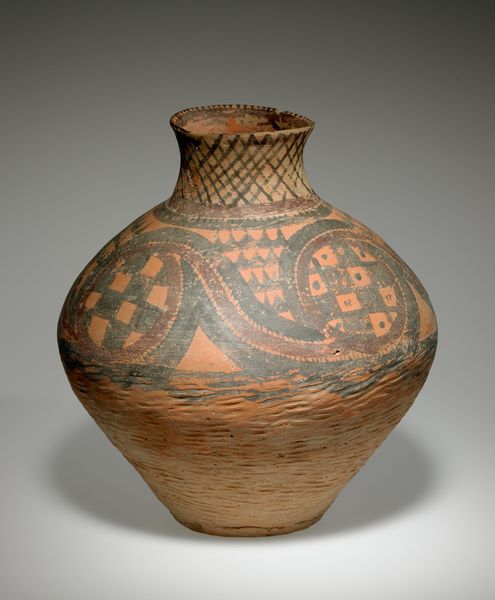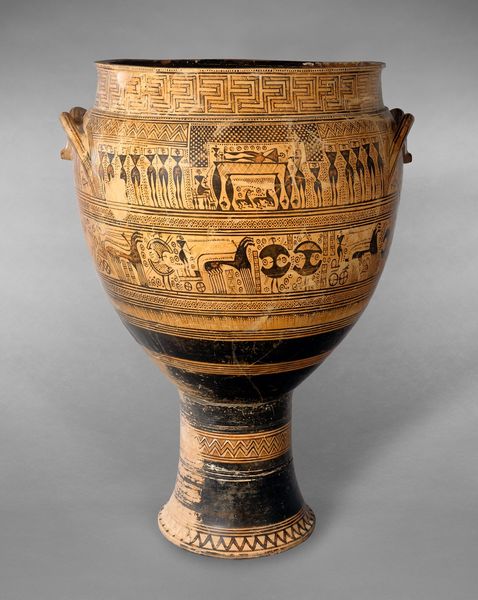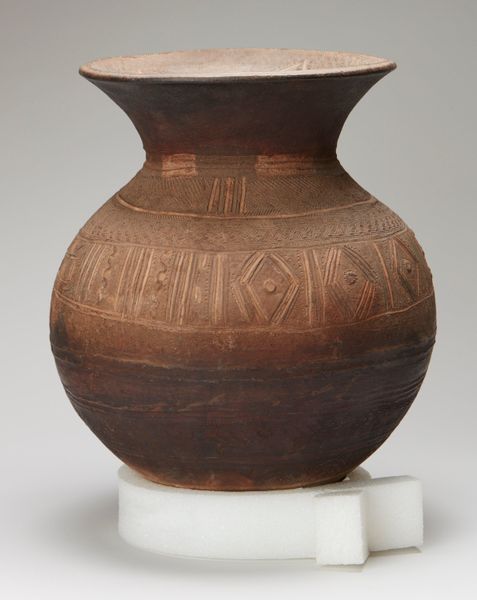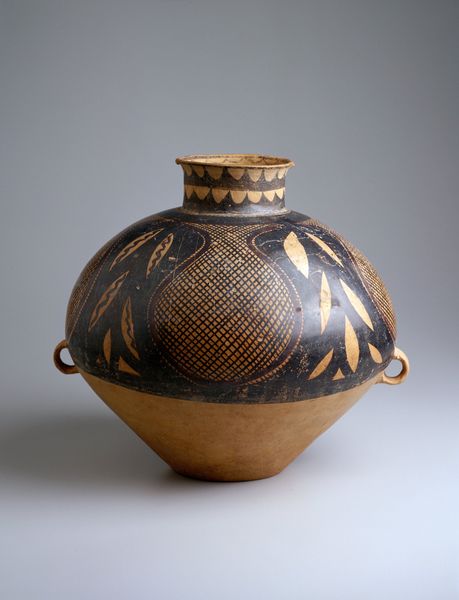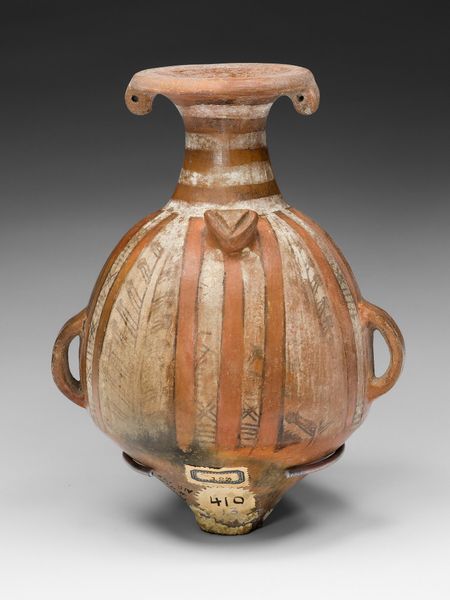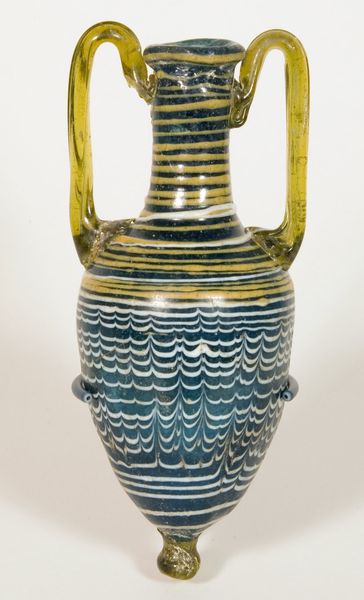
Attic Geometric Trefoil Mouth Oinochoe. From Athens 725 BC
0:00
0:00
ancientgreekpottery
National Archaeological Museum, Athens, Greece
drawing, ceramic, earthenware
#
drawing
#
sculpture
#
greek-and-roman-art
#
ceramic
#
figuration
#
earthenware
#
geometric
#
ancient-mediterranean
#
ceramic
#
earthenware
Copyright: Public domain
Editor: We're looking at an Attic Geometric Trefoil Mouth Oinochoe, from Athens, dating back to 725 BC. It’s earthenware, currently housed in the National Archaeological Museum. It's so simple, yet those geometric lines, especially the horizontals that dominate the body, create a strong visual rhythm. What strikes you about this piece? Curator: What I see is not just a decorative object, but the residue of labor and trade. Consider the extraction of the clay itself. Where did it come from? Who were the people involved in its mining and preparation? The application of geometric designs speaks to standardization and perhaps a workshop environment. The act of creating the vase suggests a systematic mode of production; we see similar patterns repeating. The inscriptions, were they part of the vase selling or the client? Editor: That's fascinating! I was focused on the aesthetics, but you’re pointing out the production and what was the use-case? How was it purchased? What value was given to it? Curator: Exactly! Let's think about its intended use. It's an oinochoe, for pouring wine. Where was the wine sourced? How did the symposium participants experience drinking from this piece? Were they a rich merchant able to afford such vases? Editor: So, its creation and function connect to a whole network of social and economic practices. I never thought about pottery in this way. Curator: Pottery wasn’t considered art but craft until the Renaissance. Yet there's such richness of the making within its history. By examining the clay, paint, and techniques, we begin to uncover stories of commerce, society, and daily existence. This in turn elevates “craft” into “art.” Editor: So much to think about when you consider all the human activity embedded in the object itself! Thank you for illuminating this piece beyond just its visual appeal.
Comments
No comments
Be the first to comment and join the conversation on the ultimate creative platform.
